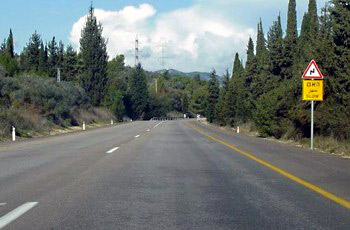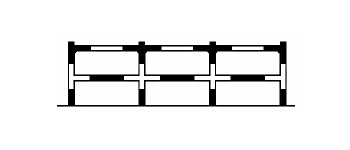Question:1
Within what distance of a bus stop is it forbidden to stop a vehicle?
Category : Rules and Regulations
Question:2
Which driver related ability is impaired during fog?
Category : Safety
Question:3
What is the meaning of the following symbol?

Category : Traffic Signs
Question:4
“Beer is not considered as an alcoholic drink”:
Category : Safety
Question:5
“You are allowed to drive under the influence of alcohol, as long as you do not mix different types of drinks”: Correct or incorrect?
Category : Safety
Question:6
The correctional measures which may be imposed by the Licensing Authority, based on the point system:
Category : Rules and Regulations
Question:7
When the following road sign is placed:

Category : Traffic Signs
Question:8
What are you required to do when the following road sign is placed?

Category : Traffic Signs
Question:9
Is it permitted to carry animals on a bus?
Category : Rules and Regulations
Question:10
What is a reasonable speed on a freeway(Motorway)?
Category : Safety
Question:11
What is required by the following road sign?

Category : Traffic Signs
Question:12
Which of the following vehicles are permitted to drive on the road’s “hard shoulders”?
Category : Rules and Regulations
Question:13
What measure should be taken before the start of every bus ride?
Category : Rules and Regulations
Question:14
How is the required distance for overtaking determined?
Category : Safety
Question:15
How are you required to conduct yourself according to the following picture?

Category : Safety
Question:16
What is the meaning of the following road marking?

Category : Traffic Signs
Question:17
A vehicle examiner or a policeman carrying a traffic examiner certificate who finds technical flaws in a vehicle, may:
Category : Rules and Regulations
Question:18
What is the additional charge applied on share taxi rides from 23:31 until 04:59?
Category : Rules and Regulations
Question:19
When is it forbidden to overtake, or to try overtaking, another vehicle?
Category : Rules and Regulations
Question:20
How would you (vehicle no. 2) conduct yourself in the following intersection?

Category : Rules and Regulations
Question:21
Is it permitted to make changes in the vehicle’s design or type?
Category : Rules and Regulations
Question:22
What are you required to do when the truck in the picture enters your driving lane?

Category : Safety
Question:23
What are the rules concerning the transportation of children on a route service taxi?
Category : Rules and Regulations
Question:24
What is instructed by the following road sign?

Category : Traffic Signs
Question:25
Is it permitted to park a vehicle besides a pedestrian safety guardrail?

Category : Rules and Regulations
Question:26
Parking at a bus stop
Category : Traffic Signs
Question:27
When driving behind a slow vehicle on a roadway while a continuous centre white line is marked to your left:
Category : Rules and Regulations
Question:28
Who is obliged to check the proper function of the following bus systems: brakes, steering wheel, horn, windshield wipers, and the opening and closing of the bus doors?
Category : Rules and Regulations
Question:29
Sudden braking is permitted when:
Category : Rules and Regulations
Question:30
What should you do to reduce the effect of dazzle (blinding) during the dark?
Category : Safety

